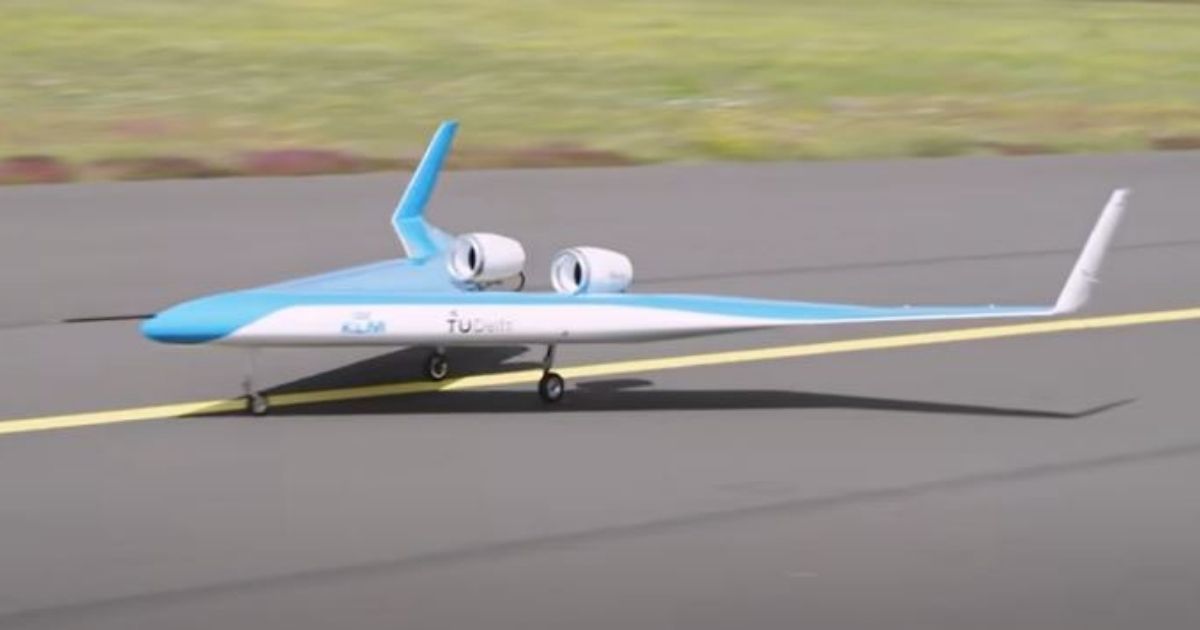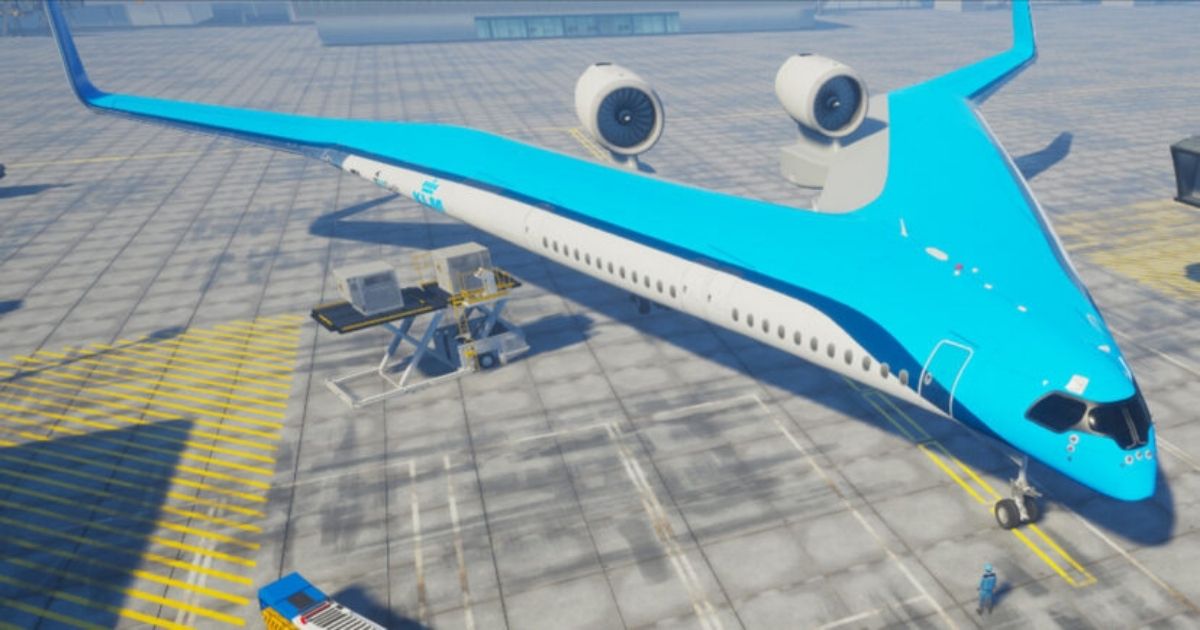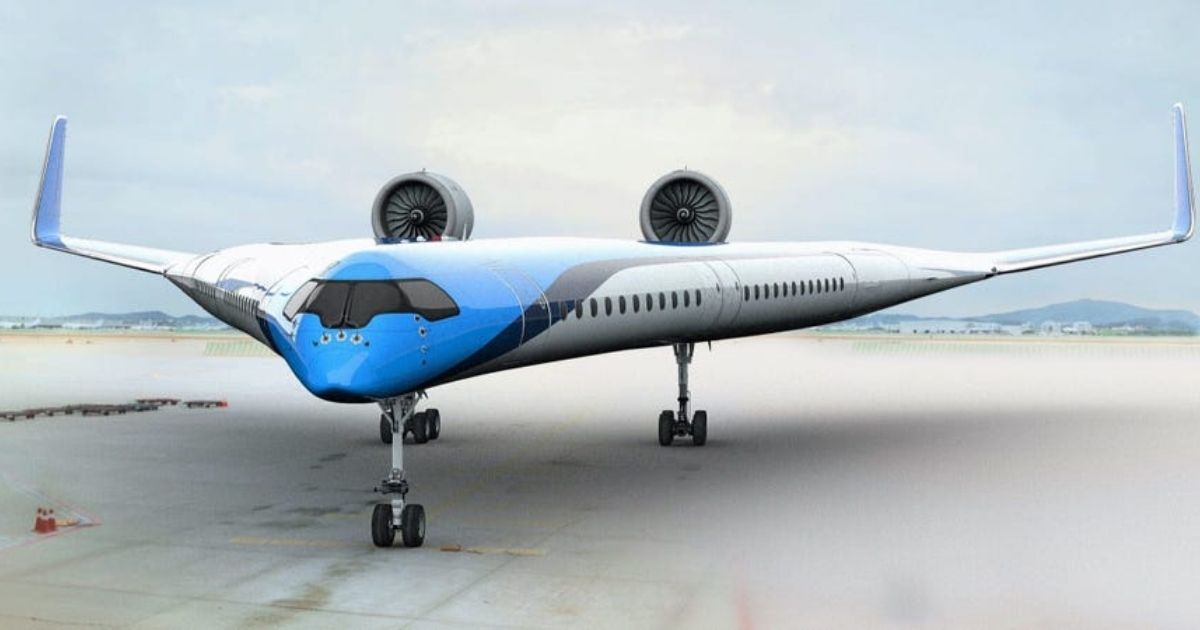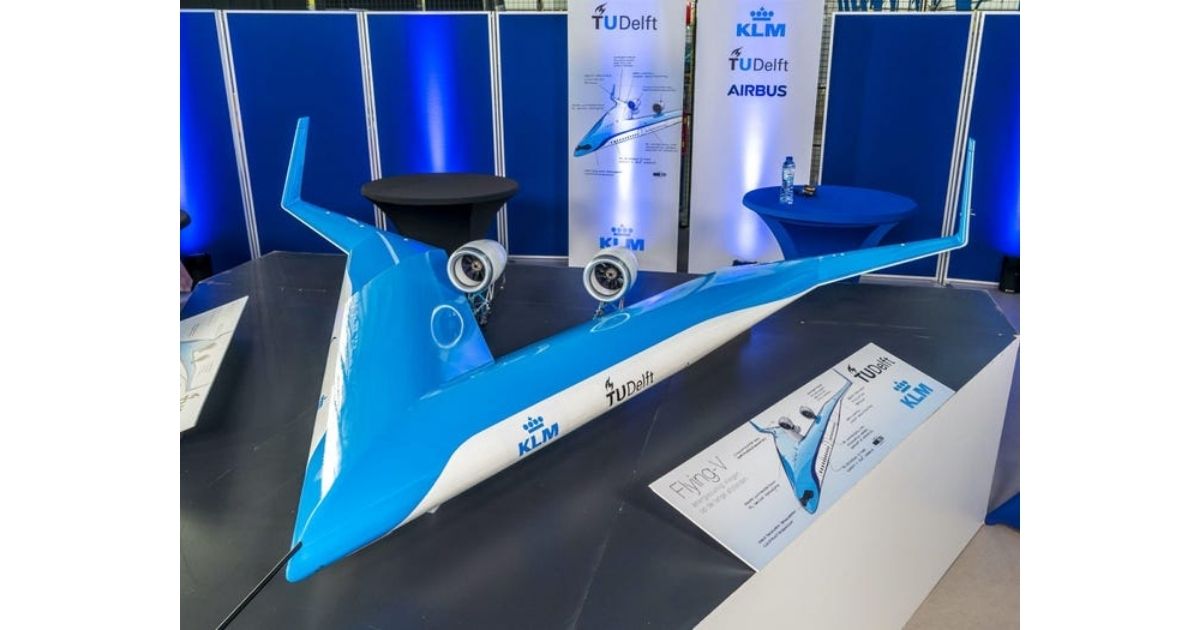The Flying-V rethinks the common shape of planes by ditching the long, straight cabin to have passengers fly in two compartments that also form the wings of the plane.
Last month, a prototype model of the plane took flight in the skies above Germany. The aircraft has been funded by Dutch airline KLM.
KLM engineers and the Delft University of Technology (TU Delft) created a miniature version of the plane rather than jumping straight in with a full-sized model. It was remote-controlled and manned by a drone pilot.
KLM recorded and shared a video of the test flight, in which project lead Roelof Vos explained that the plane’s V-shape allow it to consume less fuel than a traditional ‘tube and wing’ aircraft.
The prototype was designed to scale to prove that the unique shape would be able to fly and to test the response of the aircraft when the pilot makes maneuvers.
“It’s been two years of intense stressful work to reach this moment,” Malcolm Brown, TU Delft’s chief engineer for the Flying-V testing program said. “And then, to have it confirmed that it flies, all of that hard work, it was worth putting in all of the hours making sure everything’s correct and built properly, built accurately, and it pays off.”
However, even though the V-shaped plane flew well in the sky, it had a rocky landing that saw the nose wheel of the plane get damaged.
KLM commented on the video after sharing it on YouTube, explaining that the damage was due to ‘a gust of wind and the pilot’s response to this’
“This is common practice with scaled model test flights. (It’s estimated that one out of two scaled aircraft gets damaged this way,” KLM added.
KLM said the model is now being repaired and prepared for more test flights, but it is now also up to KLM and TU Delft to build a full-sized version of the aircraft, a project that is predicted to cost billions.
The Flying-V will be able to carry a total of 314 passengers and is believed to burn 20% less fuel than traditional passenger jets.
Last year, Vos said in a CNN report that the trial of new designs was necessary as planes could not be electric because they would become ‘way too heavy’.
“So we have to come up with new technologies that reduce fuel burn in a different way. We’ve been flying these tube and wing airplanes for decades now, but it seems like the configuration is reaching a plateau in terms of energy efficiency,” Vos said.







